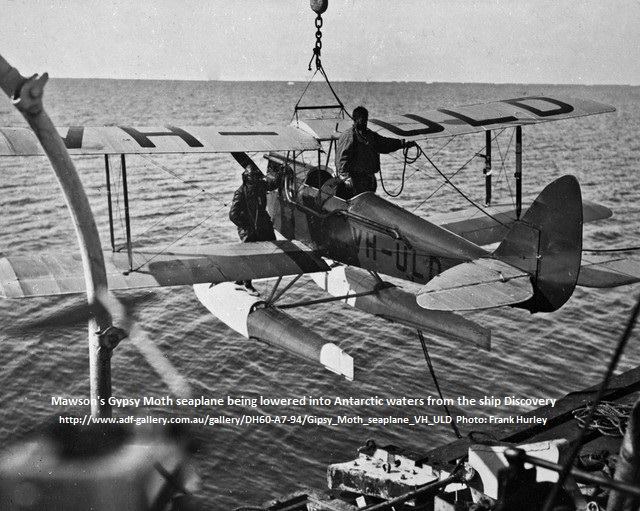
Australian Antarctic Aviation
In an earlier post I discussed the first flight in Antarctica which was made by Robert Falcon Scott in a captive hydrogen balloon, Eva, on the British Discovery expedition (https://bit.ly/2uWVGId)
But for powered flight, Australia’s Douglas Mawson, early on saw the potential for the use of aircraft for aerial exploration so he brought along a small single-engine Vickers REP Monoplane on the 1911 Australasian Antarctic Expedition (AAE).
Unfortunately the aircraft was damaged prior to departure, and never flew in Antarctica. However it did end up being used as a tractor transport on land traverses.
On 16 November 1928, Australian aviator Hubert Wilkins successfully carried out the first flight over the Antarctic continent in a Lockhead Vega 1 monoplane and was the first time that uncharted Antarctic land was mapped from an aircraft.
Mawson returned to Antarctica on the 1929–31 British, Australian and New Zealand Antarctic Research Expedition (BANZARE). This time he utilised a Gypsy Moth float-plane to take extensive aerial surveys and to scout for breaks in the ice pack.
It was very successful but on a return trip from scouting, the Gypsy Moth landed near Mawson’s ship ‘Discovery’ and when lifted aboard smashed into the side of the ship. It was a slight setback and took five days to repair.
Since the early days of Australia’s Antarctic operations, the use of fixed wing aircraft has played a vital role in enhancing Australia’s logistical and scientific capabilities in the Antarctic.
For many decades, the Royal Australian Air Force (RAAF) Antarctic Flight assisted the Australian National Antarctic Research Expeditions (ANARE) to explore, map and survey the continent using a variety of fixed wing aircraft.
In 2008, Australia made aviation history with the landing of its first intercontinental aircraft, the Airbus A319 operated by SkyTraders, on the newly constructed blue ice runway at Wilkins Aerodrome near Casey station.
Today, Australia’s Antarctic aviation system consists of an intercontinental chartered air service from Hobart to Wilkins Aerodrome near Casey station.
Other services are provided by fixed wing aircraft operators that link the various stations and provide access to other areas of the continent for scientific field work. Helicopters are also used extensively.
A new, permanent runway will soon be built near Davis Research Station to provide year round access for resupply, emergency evacuation and scientific research (https://bit.ly/2NM768s)
If you would like to see Mawson’s Gypsy Moth being used in Antarctica you can see some footage here
https://aso.gov.au/…/documentaries/siege-of-the-south/clip3/

